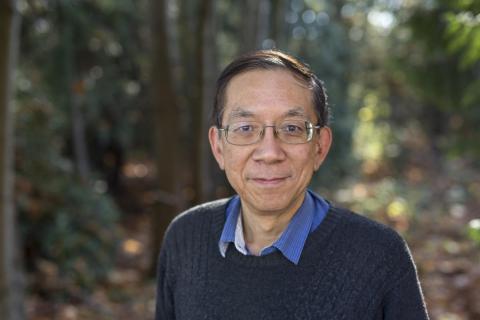
VANCOUVER – The international SuperNova Early Warning System (SNEWS) recently welcomed SNOLAB’s Helium and Lead Observatory (HALO) to its global network of neutrino detectors. TRIUMF has been involved with HALO since 2006, with Research Scientist Dr. Stan Yen lending his expertise to the program.
The SNEWS network includes neutrino detectors in China (Daya Bay), Japan (Super-Kamiokande and KamLAND), Antarctica (ICECUBE), Italy (LVD and Borexino), and now Canada (HALO).
Neutrino detectors like HALO look for bursts of neutrinos emerging from a core-collapse supernova in our galaxy. Neutrino bursts take place during the last stage of life for a massive star, where 99% of its energy released is in the form of neutrinos. Using its global network of detectors, the SNEWS warning system is activated when two or more detectors simultaneously sense bursts of neutrinos. SNEWS would then send an early warning to optical astronomers using its subscription list. This advance notice provides advantages to the optical astronomy community. “Optical astronomers can prepare their telescopes to catch the supernova in its earliest stages,” says Stan. An important feature, he points out as “otherwise, telescopes are normally booked months ahead of time to observe a set of objects chosen beforehand.”
Stan was heavily involved with many aspects of both the design and physical construction of the detector. He was also the first to point out how HALO could exploit the phenomenon of neutrino oscillation (referring to the neutrino changing its type of flavor–the discovery which was recently recognized with the Nobel Physics Prize 2015) to potentially observe, for the first time, the effects of neutrinos colliding with each other in the core of the supernova.
TRIUMF’s Deputy Director Reiner Kruecken says it is important to collaborate internationally. “HALO is an excellent example for the type of targeted opportunities that TRIUMF and its researchers are pursuing to bring their talent and expertise to bear for smaller experiments with potentially significant impact," he says. "This is also one of several experiments that strengthens the ties between TRIUMF and SNOLAB, a partnership that goes back to the Nobel Prize winning SNO experiment. Maybe the He3 detectors from SNO will bring HALO and SNEWS luck with a supernova explosion in the near future.”
“HALO is a detector of opportunity,” says Stan, referring to the fact that it used surplus lead blocks from an abandoned cosmic ray experiment, plus the neutron detectors recovered from the SNO experiment. “It's literally a detector with unique capabilities constructed of equipment left over from other experiments: a neutrino telescope that can look into the interior of a core-collapse supernova and give us a picture of the nuclear and particle processes happening inside the star as it explodes.”
TRIUMF supported these projects by building the signal and high voltage cables for the HALO detector and the test stand for the neutron detectors.
Stan remains a key member of the HALO team. He is actively involved with HALO’s detector calibration and constantly monitors the detector for signs of a supernova. The team is presently working on the next generation concept, designing a more sensitive detector approximately twelve times larger.
- Nic Zdunich, Communications Assistant
